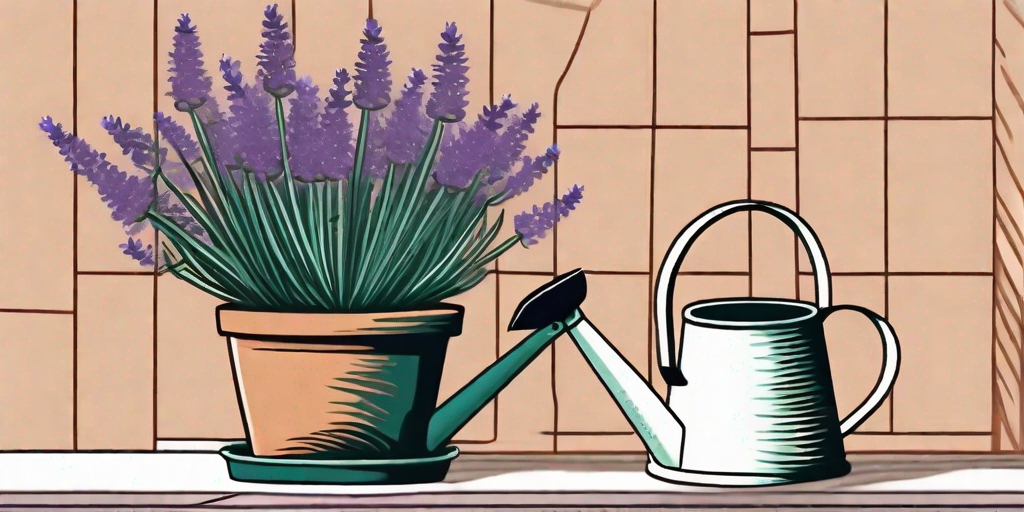
Welcome, green-thumbed enthusiasts and lavender lovers! If you've ever dreamt of having a garden filled with the intoxicating aroma of Spanish lavender, you've come to the right place. Today, we're going to spill the beans on how to grow and care for this Mediterranean beauty. So, buckle up and get ready to transform your garden into a lavender paradise!
The Lavender Lowdown
Before we dive into the nitty-gritty of lavender care, let's get to know our fragrant friend a little better. Spanish lavender, also known as Lavandula stoechas, is a perennial plant native to the Mediterranean region. It's renowned for its vibrant purple flowers and distinctive pine-like scent. But don't be fooled by its exotic origins; this plant is as tough as nails and can thrive in a variety of climates.
Spanish lavender is a real showstopper in any garden, with its unique rabbit-ear shaped flowers and silvery-green foliage. It's also a magnet for bees and butterflies, so if you're looking to create a wildlife-friendly garden, this plant is a must-have.
Planting Your Spanish Lavender
Now that we've covered the basics, let's get our hands dirty and delve into the planting process. Don't worry, it's not as daunting as it sounds. In fact, it's as easy as pie, or should we say, as easy as planting lavender!
Choosing the Right Location
Spanish lavender is a sun-loving plant, so choose a location that gets at least six hours of sunlight each day. It also prefers well-drained soil, so if your garden is more bog than beach, you might want to consider planting your lavender in raised beds or containers.
Remember, Spanish lavender is a Mediterranean plant, so it's used to hot, dry conditions. That means it's not a fan of wet, cold winters. If you live in a region with harsh winters, it's best to plant your lavender in pots so you can move them indoors when the temperature drops.
Planting the Lavender
Once you've found the perfect spot, it's time to plant your lavender. Dig a hole that's twice as wide and just as deep as the root ball. Place the plant in the hole, making sure the top of the root ball is level with the soil surface. Then, backfill the hole with soil, firm it gently, and water thoroughly.
And voila! You've just planted your first Spanish lavender. Give yourself a pat on the back, and maybe a celebratory cup of tea. You've earned it!
Caring for Your Spanish Lavender
Now that your lavender is happily settled in its new home, it's time to talk about care. Contrary to popular belief, lavender is a low-maintenance plant. It doesn't need constant pampering, just a little TLC every now and then.
Watering
When it comes to watering, less is more. Spanish lavender is drought-tolerant and doesn't like to have wet feet. So, water your plant deeply but infrequently, allowing the soil to dry out between waterings.
Keep in mind that newly planted lavenders will need more frequent watering until they establish. Once they're established, they can pretty much fend for themselves. They're tough cookies, these lavenders!
Pruning
Pruning is an essential part of lavender care. It keeps the plant healthy and promotes more blooms. The best time to prune is in early spring, just as the new growth starts to appear. Cut back about a third of the plant, making sure to leave some green foliage.
Don't be afraid to get stuck in. Spanish lavender is a robust plant and can handle a good haircut. In fact, it'll come back even stronger and more beautiful. It's like a phoenix rising from the ashes, but with less fire and more flowers.
FAQs
Can I grow Spanish lavender indoors?
Yes, you can! Spanish lavender can be grown indoors in a pot. Just make sure it gets plenty of sunlight and isn't overwatered.
How often should I water my Spanish lavender?
Water your Spanish lavender deeply but infrequently, allowing the soil to dry out between waterings. Remember, this plant is a desert dweller at heart, so it prefers to be on the dry side.
When should I prune my Spanish lavender?
Prune your Spanish lavender in early spring, just as the new growth starts to appear. Cut back about a third of the plant, making sure to leave some green foliage.
Wrapping Up
And there you have it, folks! The secrets to growing luscious Spanish lavender. With a little bit of love and care, you can transform your garden into a fragrant oasis. So, what are you waiting for? Get out there and start planting!
Remember, gardening is all about trial and error. Don't be disheartened if your first attempt doesn't go as planned. Keep trying, keep learning, and most importantly, keep having fun. After all, the journey is just as important as the destination. Happy gardening!











